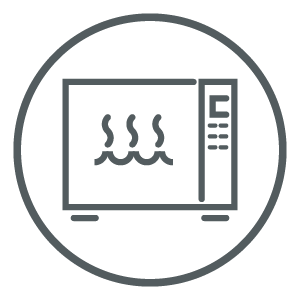 Sterilization & Disinfection
Sterilization & Disinfection
Diligence in implant processing will decrease infection risks
Implants are foreign bodies, and they increase the risk of a surgical site infection. Processing implants requires strict adherence to the required steps because implants have sustained contact with sterile tissue. An implant is defined as a device that is placed into a surgically or naturally formed cavity of the…
ECRI issues 2021 Top 10 Health Technology Hazards, managing EUA devices tops list
Editor's Note ECRI , on January 28, issued its Top 10 Health Technology Hazards for 2021. First on the list is the complexity of managing devices that have Food & Drug Administration (FDA) emergency use authorization (EUA) because of the COVID-19 pandemic. ECRI experts caution that hospitals need to watch…
FDA reduces N95 decontamination cycles from 20 to 4
Editor's Note The Food & Drug Administration (FDA), on January 22, lowered the number of times an N95 mask can be cleaned and reused to 4, down from a previous maximum of 20 reuses, the January 25 Fierce Biotec reports. The FDA reissued emergency use authorizations for 10 N95 decontamination…
FDA revises EUAs for N95 decontamination systems
Editor's Note The Food and Drug Administration on January 21 reissued emergency use authorizations (EUAs) for 10 systems used to decontaminate N95 respirators used by healthcare personnel . The 10 systems are: Michigan State University Decontamination System Technical Safety Services VHP Decontamination System Stryker Sustainability Solutions VHP Decontamination System STERIS…
AAMI releases four amendments to steam sterilization standard
Editor's Note The Association for Advancement of Medical Instrumentation (AAMI), on January 20, released four amendments to the “ANSI/AAMI ST79 Comprehensive guide to steam sterilization and sterility assurance in healthcare facilities.” Among the additions: recommendations and clarifications for maintaining the integrity of the sterile processing area, including common sense additions,…
Expanding reprocessing programs can yield cost savings
The financial impact of COVID-19 on healthcare providers has been considerable. With experts predicting that half of all US hospitals would be operating in the red by the end of 2020, healthcare leaders have had to seek multiple ways to cut costs. The expansion of single-use medical device (SUD) reprocessing…
Take our survey to win a gift card
Editor's Note The Kilmer Innovations in Packaging (KIIP) group seeks your feedback on sterile medical device packaging. This group is passionate about sterile packaging and its role in the delivery of sterile, safe-to-use medical devices. We invite you to take a brief survey for a chance to win a $50…
Illuminating infection risks in urology—A spotlight on COVID-19
Now that facilities are returning to performing urology cases, what should staff be aware of regarding COVID-19 and urology in general? This was the question Lane Jacobs, an expert in global product solutions for Boston Scientific, Marlborough, Massachusetts, asked Cori L. Ofstead, MSPH, president and chief executive officer, Ofstead &…
How does lifelong learning in sterile processing affect patient care?
Editor’s Note. Developing and sustaining competent sterile processing staff is critical for patient safety, yet there is a dearth of formal educational programs for this function. Whitman Partners, a Portland, Oregon-based specialty search firm dedicated to placing directors of surgical services at hospitals and surgery centers nationwide, asked former surgical…
New recommendations issued for instrument care and cleaning
New recommendations developed from evidence-based research have been added to AORN’s Guideline for Care and Cleaning of Surgical Instruments. Several of these changes will have an impact on the quality of processing in sterile processing (SP) areas. This latest version, released on October 12, 2020, includes industry changes that have…

 Free Daily News
Free Daily News